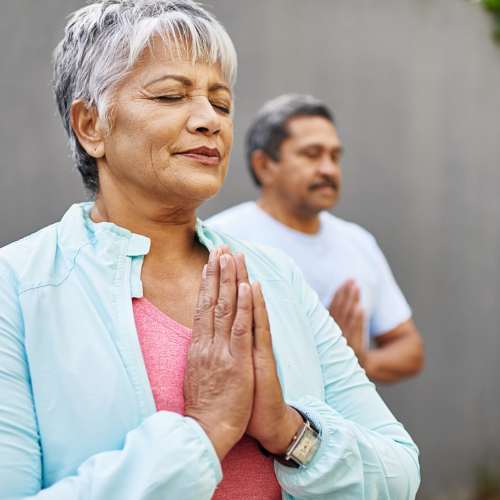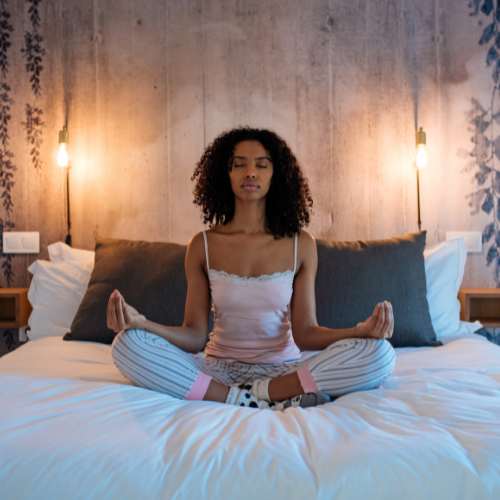Guided Meditation for Chronic Pain Management

Support for Chronic Pain Management

Sleep for Pain Management

Nutrition for Pain Management

Exercise for Pain Management

Guided Meditations for Chronic Pain
Guided Meditations – General Instructions
These recordings go straight into the guided practice because I’ve found that after listening to recorded meditations in the past, I get restless with the beginning instructions.
Below are listed some guidelines for positioning during meditation. Please review these, if needed, before your meditations. Get comfortable and hit play!
Mindfulness of Breath Meditation
12 Minute Guided Body Scan
There are four classic meditation postures. Choose the one that feels right for you in the moment and is appropriate for the meditation.

Sitting for Meditation
Sit with an upright posture. (More about posture under the standing section.) This can be done in a chair or on the floor. If you are in a chair, it is best that your feet rest comfortably on the floor with your hips at the level of your knees. You may need a folded towel or blanket to support this. It is often good if your back is not resting against the back of the chair.
This helps give your posture some energy and this helps with concentration. But, and I can’t emphasize the enough, get comfortable. If you want the back support, use it. You may also use a rolled up towel or blanket for lumbar support. If you are sitting on the floor, choose a position that you can sit comfortably in for the duration of the meditation.
You may sit crosslegged or kneeling, use a meditation cushion or bench, be near a wall for support or not. Your hand position for these practices is not important. Place them is a position that feels natural for you. The most important thing here is for you to be comfortable! Comfortable with some energy- the goal for the practices here is not to fall asleep.

Standing for Meditation
This posture is great for energy and to keep you alert. Sometimes it may be the most comfortable position available to you. Pay attention to your posture if you decide to stand. Imagine a string is attached to your sternum and is gently lifting up to the sky.
This should pull your ears right over your shoulders and ret of your skeleton can hang loosely from here. Play with the position of your pelvis, gently tipping it forward and back until you rest in a neutral pelvis position.
Knees may have an ever so slight bend and feet should be flat on the ground with weight evening distributed. If your body doesn’t feel comfortable in this alignment, just make sure you are comfortable, stable, and supported.

Lying for meditation

Walking for meditation
Walking meditation is typically done very slowly and intentionally. This may be a wonderful practice for you if you have a difficult time being still.
With the exception of walking meditation, the objective is to be still during the practice. For the purposes here, feel free to move gently as needed. But be mindful of these movements and make them slowly if possible. What is your body telling you? What is your body feeling in THIS moment? Stay present.
Eyes can be closed or open. Eyes closed can be more relaxing and help the mind center and eyes open may feel safer at times. If you keep your eyes open just use a soft gaze a few feet in front of you. If you are getting very sleepy, restless, or your mind is really full of chatter, opening them for a bit can be helpful.
Still falling asleep while using all the suggestions above about maintaining some energy in your posture?… You probably needed some rest! No worries, but you may want to check out the sleep tab.
